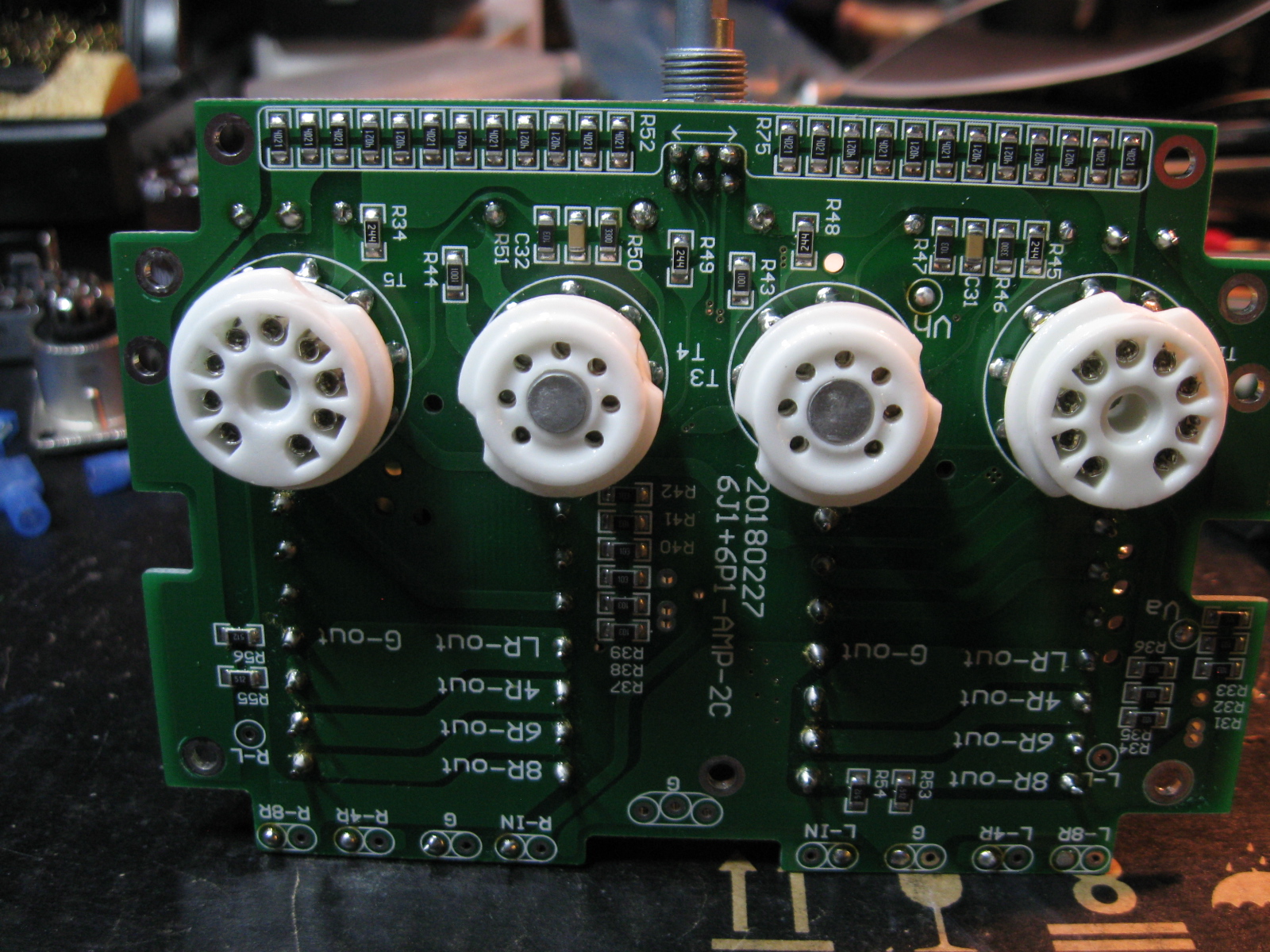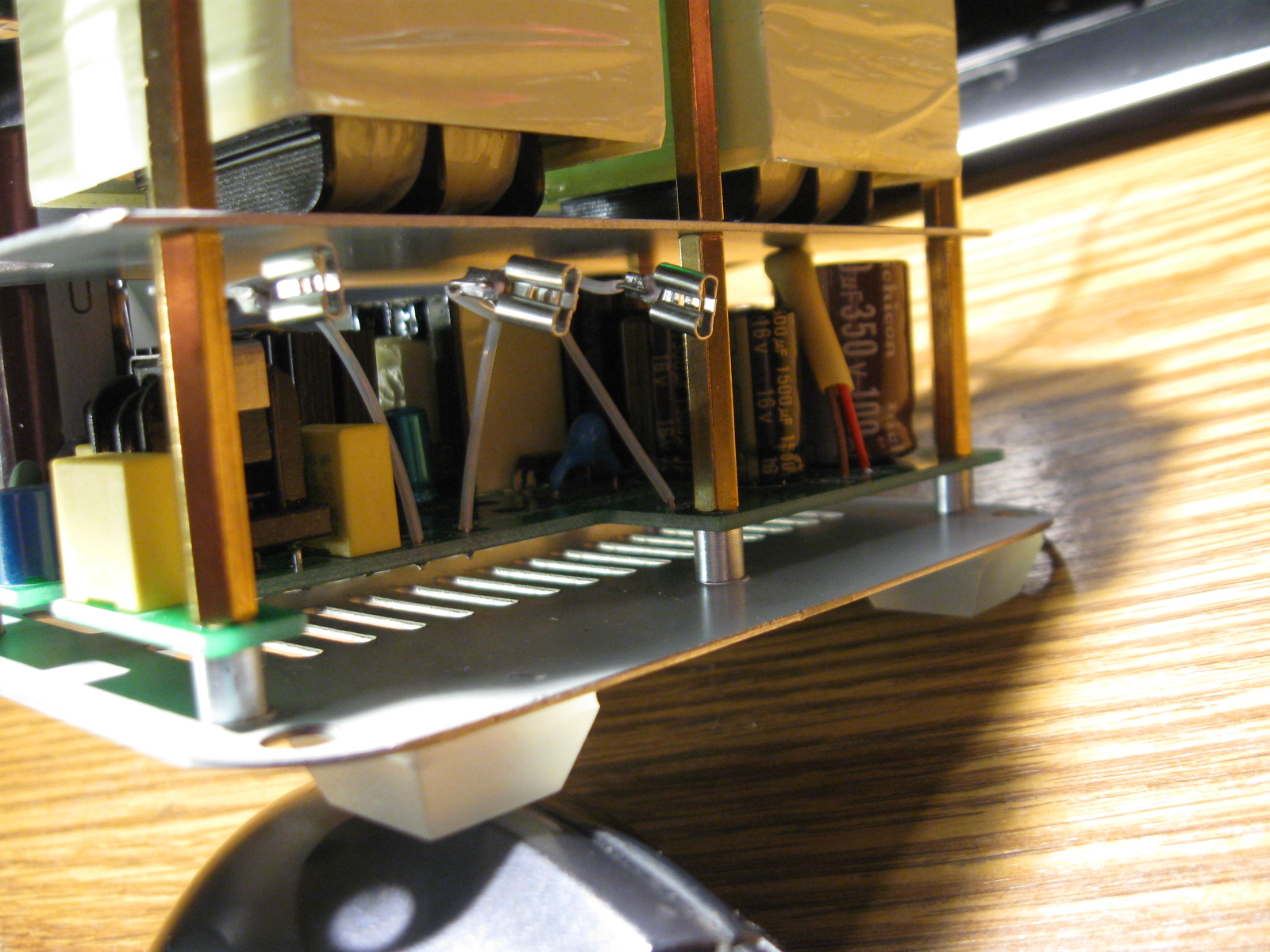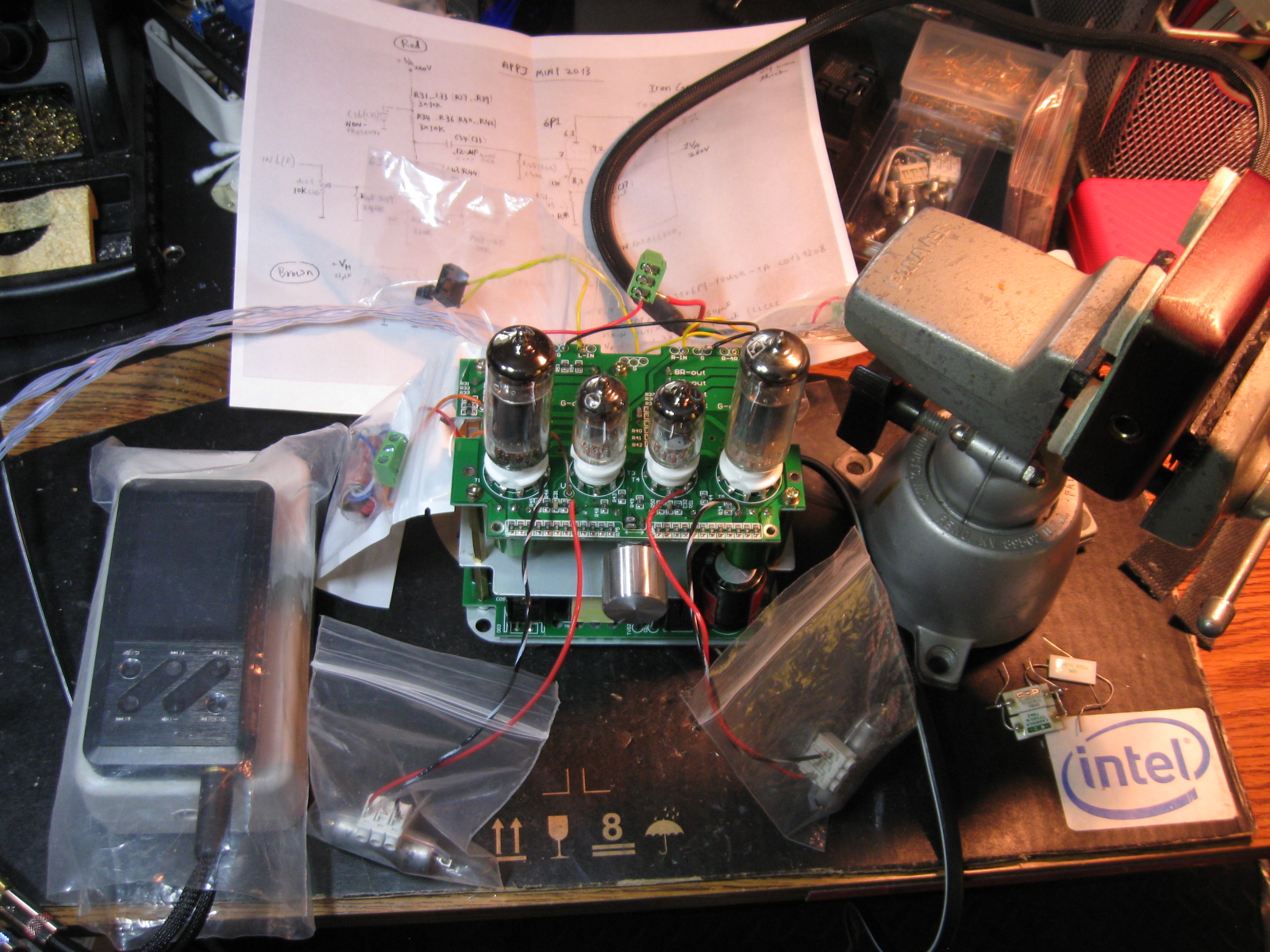starting a thread to document some info on this little amp.
This is probably still in production as there are multiple listings on ebay. Typical price is $120 at this point.
I recently bought a used (likely a customer returned semi-defective) unit, for a bit less, mainly to play with.
Two 6J1 pushing two 6P1, spec claims 3w per channel.
The one I got has 4 ohm and 8 ohm speaker jacks in the back, some (newer?) units appear to also have 6 ohm outputs. The 6 ohm tap is present on the PCB in my amp, they just didn't install the output hardware for it.
Disassembly: this amp has to be taken apart piece by piece, from the top
1) remove the top aluminum plate (four screws)
2) pull off the volume knob, and remove the nut/washer
3) remove the five screws holding the top pcb, and desolder the wires in the back and red (Va, which is HV) and brown (Vh, filament). The top PCB can then be tilted and slide out.
4) removed the five long brass stand-offs. Then remove the steel divider plate.
5) unplug the G, N, L wires from the power jack.
6) Remove the four larges screws from the bottom, the bottom PCB is now free.
then put the whole stack back together outside of the aluminum shell.

This is probably still in production as there are multiple listings on ebay. Typical price is $120 at this point.
I recently bought a used (likely a customer returned semi-defective) unit, for a bit less, mainly to play with.
Two 6J1 pushing two 6P1, spec claims 3w per channel.
The one I got has 4 ohm and 8 ohm speaker jacks in the back, some (newer?) units appear to also have 6 ohm outputs. The 6 ohm tap is present on the PCB in my amp, they just didn't install the output hardware for it.
Disassembly: this amp has to be taken apart piece by piece, from the top
1) remove the top aluminum plate (four screws)
2) pull off the volume knob, and remove the nut/washer
3) remove the five screws holding the top pcb, and desolder the wires in the back and red (Va, which is HV) and brown (Vh, filament). The top PCB can then be tilted and slide out.
4) removed the five long brass stand-offs. Then remove the steel divider plate.
5) unplug the G, N, L wires from the power jack.
6) Remove the four larges screws from the bottom, the bottom PCB is now free.
then put the whole stack back together outside of the aluminum shell.





















